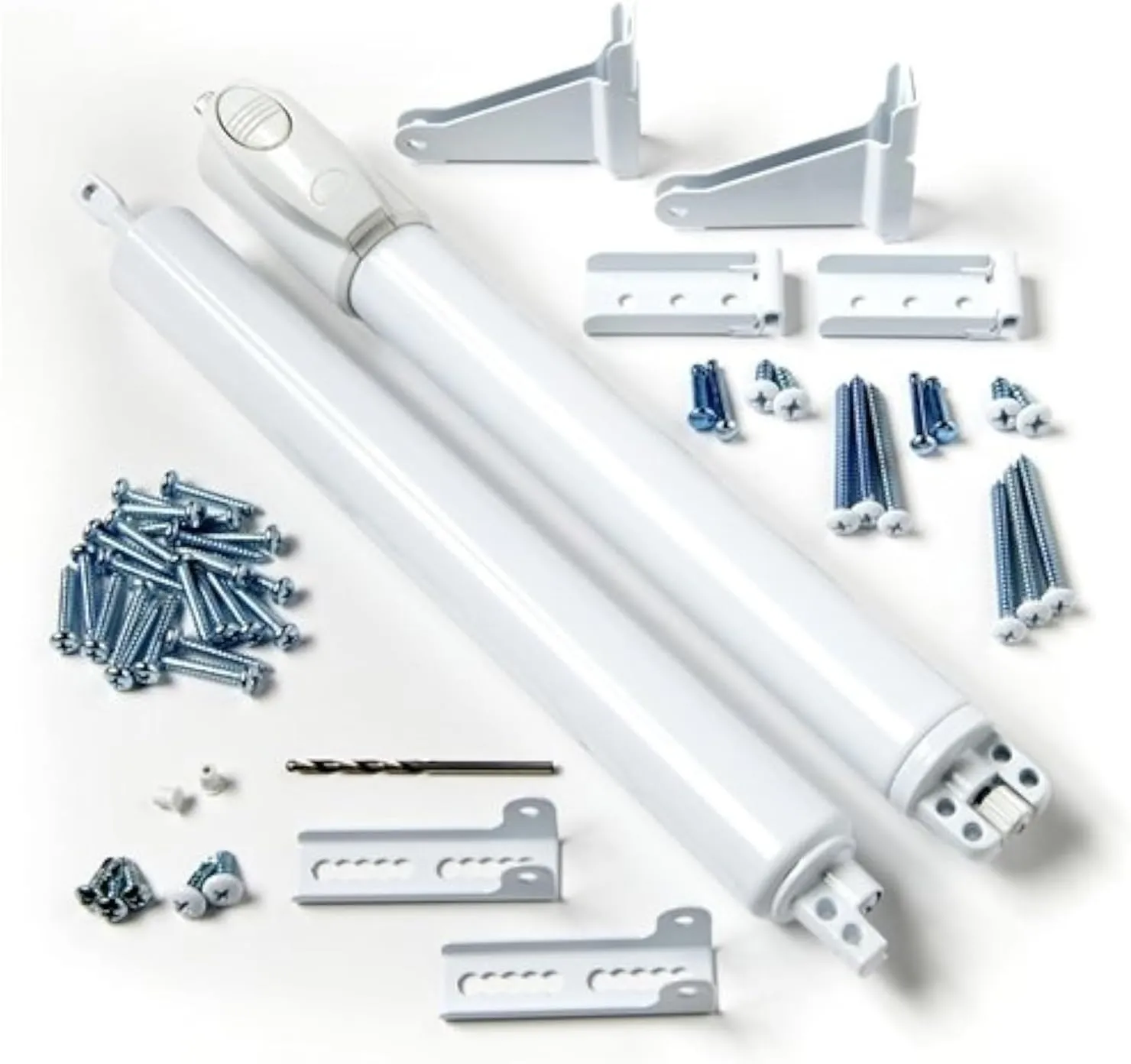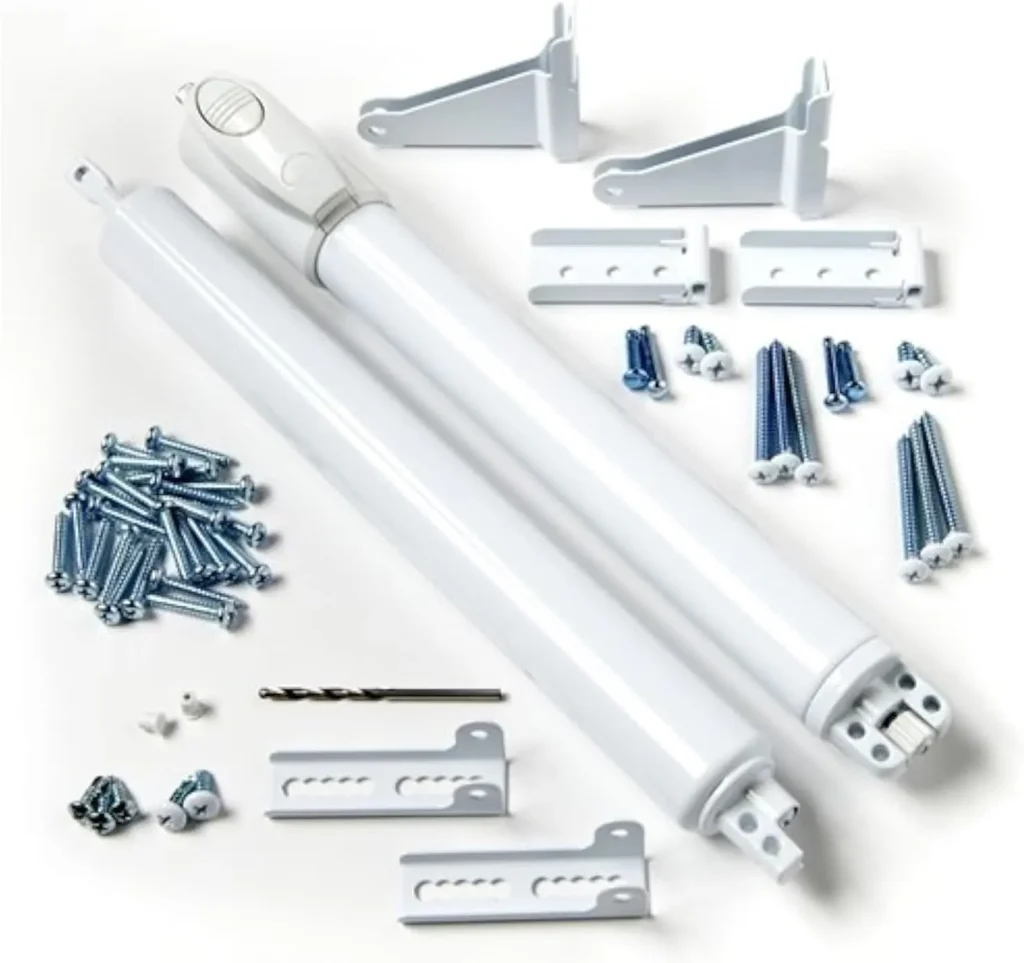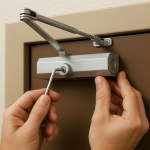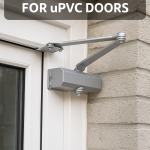Hey there, homeowners! Let’s talk about something that doesn’t get nearly enough love: the storm door closer. Specifically, we’re diving into the world of Andersen storm door closers, those nifty little devices that keep your storm door from slamming shut or flopping open like a fish out of water. If you’ve ever wrestled with a door that rockets closed or refuses to latch properly, you know why this matters. So, grab a coffee, settle in, and let’s break down why Andersen’s closers are worth your attention, how they stack up against the competition, and what it all means for your home’s vibe and functionality.
Why Storm Door Closers Are a Big Deal
Picture this: you’re hauling groceries through your front door, and your storm door decides to either slam in your face or swing wide open, letting every mosquito in the neighborhood crash the party. Not cool, right? A storm door closer is the unsung hero that keeps things smooth, controlled, and secure. It’s the muscle behind your storm door, ensuring it opens easily and closes gently—without shredding your heels or waking the neighbors.
Andersen, a heavyweight in the storm door game, has been crafting these bad boys with a focus on durability, ease of use, and style. But not all closers are created equal, and there’s a surprising amount of nuance to consider when picking the right one. Let’s unpack what makes Andersen’s closers tick, how they compare to other brands, and why you should care.
The Lowdown on Andersen Storm Door Closers
Andersen’s storm door closers come in a variety of flavors, but they’re all designed to make your life easier. Whether you’re rocking a 3000 Series Full View Retractable Storm Door or the beefier 4000 Series with SmoothControlPlus, Andersen’s closers are built to handle the job. Most of their kits include a top and bottom closer, jamb brackets, door brackets, and screws, often with a push-button feature that lets you hold the door open without fumbling for a clunky washer.
What’s cool about Andersen’s closers? They’re universal, meaning they play nice with most Andersen and EMCO storm doors, and even some other brands. Plus, they come in a rainbow of colors—white, black, almond, bronze, you name it—so you can match your door’s aesthetic without breaking a sweat. But the real magic happens in the tech, like the SmoothControlPlus system on the 4000 Series, which Andersen claims is 50% stronger than standard dual closers, offering a smoother, more consistent latch.
The Good, The Bad, and The Slammy: User Experiences
Now, let’s get real. Andersen’s closers sound great on paper, but what do actual users think? Scouring reviews on Amazon and Home Depot, the feedback is mostly positive but not without some gripes. Users love the ease of installation—many say it takes under 10 minutes with a screwdriver and a bit of elbow grease. One reviewer raved about the Andersen Storm Door Closer Kit in Black, calling it “exactly like the original” and a “perfect fit” for their door, with a quick swap using existing hardware.
But here’s the catch: some folks aren’t thrilled with the closing action. A common complaint is that Andersen’s standard closers don’t always open a full 90 degrees, which can be a pain if you’re trying to maneuver furniture through the door. One Amazon reviewer swapped out their Andersen closer for a Wright Products model because it allowed a wider opening angle—up to 100 degrees. Another issue? The dreaded “turbo-close” effect, where the door rockets shut for the first quarter of its travel before slowing down. A Reddit user vented about this, saying it’s like the door is out to get their heels.

Andersen Storm Door Closer Kit in White Color Kit includes top door closer, bottom “push button” door closer, jamb bracket, door bracket, drill bit and screws. Push button style closer (No “hold open” washer needed)
On the flip side, Andersen’s SmoothControlPlus system gets props for tackling this issue. Users report a more consistent close, especially on the 4000 Series doors, though some still tweak the pneumatic adjustment screw to get the speed just right. The push-button hold-open feature is also a crowd-pleaser, letting you prop the door open with a tap of your toe—way more convenient than the old-school slide tab.
Comparing Andersen to the Competition
So, how do Andersen’s closers stack up against other big names like Larson, Pella, or Wright Products? Let’s break it down with a side-by-side comparison to keep things crystal clear.
| Feature | Andersen | Larson | Wright Products | Pella |
|---|---|---|---|---|
| Compatibility | Universal, fits most Andersen/EMCO and some other brands | Compatible with Larson doors, some universal options | Broad compatibility with Andersen, Larson, Pella, and others | Primarily designed for Pella doors |
| Closing Mechanism | Pneumatic, SmoothControlPlus on 4000 Series for smoother latch | Screen Away® technology, hidden closers on some models | Standard pneumatic, adjustable speed | Pneumatic, focus on smooth operation |
| Hold-Open Feature | Push-button (foot-activated on some models) | Touch ‘n Hold system, button-based | Slide tab or button-based hold-open | Button-based hold-open |
| Max Opening Angle | ~80-90° (some user complaints about limited range) | Up to 90°, some models with hidden closers allow more | Up to 100° with certain models | Typically 90°, adjustable with installation |
| Durability | High-quality materials, lifetime limited warranty on some components | Robust, with weather-resistant finishes | Standard-duty, some users note weaker brackets | High durability, weather-tight seals |
| Price (Approx.) | $30-$50 for closer kits | $25-$45 for closer kits | $15-$30 for single closers | $35-$60 for closer kits |
| Ease of Installation | Easy, ~10-15 mins with basic tools | Very easy, often pre-installed on Larson doors | Simple, but brackets may feel flimsy | Moderate, may require precise alignment |
| User Rating (Amazon/Home Depot) | 4.0-5.0 stars, mixed on closing speed | 4.2-4.8 stars, praised for Screen Away® | 4.5 stars, budget-friendly but less premium | 4.0-4.5 stars, reliable but pricier |
Sources: Andersen Closer Kits, Larson Storm Doors, Wright Products Reviews, Pella Storm Doors.
Andersen shines in build quality and customization, with a lifetime limited warranty that covers paint adhesion, hinges, and frames. Their SmoothControlPlus system is a standout for those who hate the “slam zone.” Larson, though, takes the crown for innovative screen technology, like their Screen Away® system, which rolls up into the frame for a sleek look. Wright Products is the budget champ, offering solid performance for less, but some users find their brackets a bit flimsy. Pella’s closers are reliable and focus on weather-tight seals, but they’re pricier and less universal.
Key Insights: What You Need to Know
Alright, let’s cut through the noise and get to the good stuff. Here are the big takeaways when it comes to Andersen storm door closers and their place in the market:
- SmoothControlPlus Is a Game-Changer: If you’re splurging on a 4000 Series door, the SmoothControlPlus closer is worth it. It’s designed to eliminate that annoying initial “free fall” that cheaper closers suffer from, giving you a smoother close from start to finish. Users on Reddit have begged for this kind of tech, and Andersen delivers.
- Installation Woes Are Real: While most users find Andersen’s closers easy to install, the instructions can be lacking. One reviewer called them “HORRIBLE,” suggesting you might need a YouTube tutorial or a handy friend to get it right. Pro tip: measure twice, drill once, and keep a power drill nearby for the jamb brackets.
- The 90-Degree Problem: The biggest gripe with Andersen’s standard closers is the limited opening angle. If you need your door to swing wide open, you might need to tweak the installation or consider a competitor like Wright Products, which some users swear by for a wider range.
- Wind Can Be a Dealbreaker: Andersen’s closers are sturdy, but they’re not invincible. Strong winds can bend or break them, as one Amazon reviewer learned the hard way. If you live in a windy area, make sure your door is latched when not in use, as the warranty doesn’t cover wind damage.
- Value vs. Cost: Andersen’s closers aren’t the cheapest, but they’re built to last and backed by solid customer support. If you’re on a budget, Wright Products or Larson might save you a few bucks, but you might sacrifice some durability or premium features.
Implications for Your Home
So, what does all this mean for you? Choosing the right storm door closer isn’t just about function—it’s about the vibe of your home. A smooth, reliable closer makes your entryway feel polished and welcoming, like a firm handshake from your house. A bad one? It’s like a door that slams in your guest’s face—rude and embarrassing.
Andersen’s closers, especially on their higher-end models, elevate your storm door from a utilitarian add-on to a legit style statement. The ability to match colors and hardware means your door can blend seamlessly with your home’s exterior, whether you’re going for modern chic or classic charm. Plus, the energy efficiency from tight seals and thermal glass can shave a few bucks off your energy bill, which is always a win.
On the flip side, if you’re dealing with a tight budget or a super windy location, you might need to weigh whether Andersen’s premium price tag is worth it. A cheaper alternative like Wright Products could get the job done, but you might be replacing brackets sooner than you’d like. And if you’re a DIY newbie, be prepared to lean on online tutorials to navigate Andersen’s sometimes sparse instructions.
Wrapping It Up: Is Andersen the Right Choice?
At the end of the day, Andersen storm door closers are a solid bet for most homeowners. They’re durable, customizable, and backed by a brand with a rep for quality. The SmoothControlPlus system is a standout for anyone who hates the slam, and the universal compatibility means you’re not locked into one brand forever. But if you need a wider opening angle or you’re pinching pennies, you might want to shop around—Larson and Wright Products have their own charms.
Ultimately, the right closer depends on your priorities: style, smoothness, or straight-up value. So, next time you’re cursing your storm door for slamming shut or refusing to latch, remember: a good closer can make all the difference. Got a storm door horror story or a closer you swear by? Drop it in the comments—I’m all ears!



